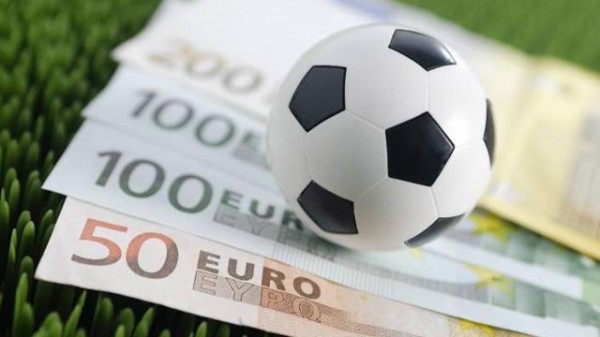 A previous article on this website (Why buy a football club?) focused on the issue of why people buy football clubs. This blog refers to the somewhat strange situation where people who have made large amounts of money from a very successful business career always seem to lose money when they invest in a football team.
A previous article on this website (Why buy a football club?) focused on the issue of why people buy football clubs. This blog refers to the somewhat strange situation where people who have made large amounts of money from a very successful business career always seem to lose money when they invest in a football team.
The Deloitte’s report into football finance found that in the 2012/13 season only half the clubs in the English Premier League (EPL) made an operating profit – profits excluding net transfer expenditure. When the impact of transfer expenditure is included, even fewer clubs make any money. For example, the three teams battling it out for the EPL title this year, Chelsea, Liverpool and Manchester City, reported losses for 2012/13 of £49.4 million, £49.8 million and £51.6m respectively.
What makes the size of these losses even more astonishing is that they have occurred in a period when the revenues earned by the top clubs have increased rapidly. In 2004/05 the combined revenue of the 20 EPL clubs was £1.3billion. By 2011/12 this figure had increased to £2.36 billion.
Given these rapidly rising revenue streams, the main explanation for this poor profit performance is the growth in players’ salaries. It has been estimated that approximately 80% of the increase in revenues generated by the team in the EPL since it began in 1992 have gone to the players in higher wages. In 2011/12 the total wage bill in the EPL was a staggering £1.658 billion, with an average wage bill of £83 million per club. The average weekly wage of a player has doubled over the past six years and is now estimated to be between £25,000 and £30,000 per week.
One deal which recently hit the headlines was that of Wayne Rooney who signed a five-year contract with earnings of up to £300,000 a week or £15.6m annually. However, Mr Rooney is still a long way short of the highest paid sports star. When based on wages and win bonuses, Forbes reported this to be American footballer, Aaron Rodgers, who was paid £25.75m in 2012-13!!!
One major factor that can partly explain this rapid increase in players’ pay is the increased competition for their skills. The potential impact of the transfer system on players’ mobility and wages was discussed in an article on the website in December (Recent challenges to the football transfer system). The career of Tom Finney provides an interesting case study of the impact of the monopsony power that the transfer system and maximum wage used to give the clubs.
Finney was one of the most talented footballers of the 1940s/50s but he played at a time when there was still a maximum wage and a transfer system that was far more restrictive that it is today. He first played in the youth team for Preston North End in 1936 aged 14. Apart for a three-year period between 1942 and 1945 when he served in the army during the Second World War, he remained with Preston for his whole career. He finally retired in 1959 at the age of 38 having scored 210 goals in 473 appearances. He also played in three World Cup final tournaments and scored 30 goals in his 76 international appearances for England.
He also played in three World Cup final tournaments and scored 30 goals in his 76 international appearances for England.
When he died in February of this year many people talked of his loyalty to Preston and the fact that he only earned £20/week when he retired (the maximum wage at the time) and had to supplement his income by working as a plumber. However, interestingly in 1952 an Italian club – Palermo – tried to sign Finney from Preston on a deal which would have paid him a basic weekly wage of £32.25, a bonus of up to £100 per week and a signing on fee of £10,000. At the time he earned the maximum wage of £14 per week with Preston and received a win bonus of up to £2 per week. Palermo also offered him a luxury Mediterranean villa, a brand new sports car and unlimited travel between England and Italy funded by the club. Unsurprisingly, Finney was tempted by the deal and commented that:
There was a genuine appeal about the prospect of trying my luck abroad, not to mention the money and the standard of living.
However, because of the transfer system in place at the time, Preston could block the move. The chairman explained to Finney:
Tom, I’m sorry, but the whole thing is out of the question, absolutely out of the question. We are not interested in selling you and that’s that. Listen to me, if tha’ doesn’t play for Preston then tha’ doesn’t play for anybody.
The club also announced that they would not consider selling Finney for any transfer fee below £50,000. Palermo had offered £30,000 and the transfer record at the time was less that £20,000.
It is highly unlikely that football will ever return to a type of transfer system and maximum wage that gives the clubs the sort of monopsony power they had in Finney’s days. However a new set of policies have been recently agreed and introduced to try to slow down the increase in players’ pay. Financial Fair Play rules set limits on the size of financial losses that clubs can incur over a three-year period. If these rules are broken, then UEFA could prevent the guilty team from entering lucrative competitions such as the Champions League. The EPL also has the power to award points deductions.
With the combined revenues of the 20 EPL clubs forecast to increase by 24% to £3.080 billion in the 2013/14 season, it will be interesting to see how much of this money improves the financial performance of the clubs and how much goes into players’ wages.
Articles
- Tom Finney
- Uefa’s Financial Fair Play:Premier League club analysis
- Sir Tom Finney obituary
- Financial fair play: everything you need to know
- Why on earth buy a football club?
- FFP gives Chelsea ability to resist PSG’s advances for £300 pair
Spartacus educational (11/11/13)
The Telegraph (4/3/14)
The Guardian (14/2/14)
UEFA.com, (28/2/14)
BBC News (27/2/14)
Express (28/3/14)
Questions
- Draw a diagram to illustrate the impact of a maximum wage on a perfectly competitive labour market and explain your answer.
- Analyse the impact of the maximum wage on worker surplus, firm surplus and deadweight welfare loss. Draw a diagram to illustrate your answer. Comment on the impact of the maximum price on economic efficiency.
- Draw a diagram to illustrate the impact of a maximum wage on a monopsonistic labour market. Assess its impact on economic efficiency.
- Some authors have argued that the Financial Fair Play regulations are a form of vertical restraint/agreement. What is a vertical restraint?
- Find an example of a vertical restraint in a different industry. What impact will it have on economic welfare?
